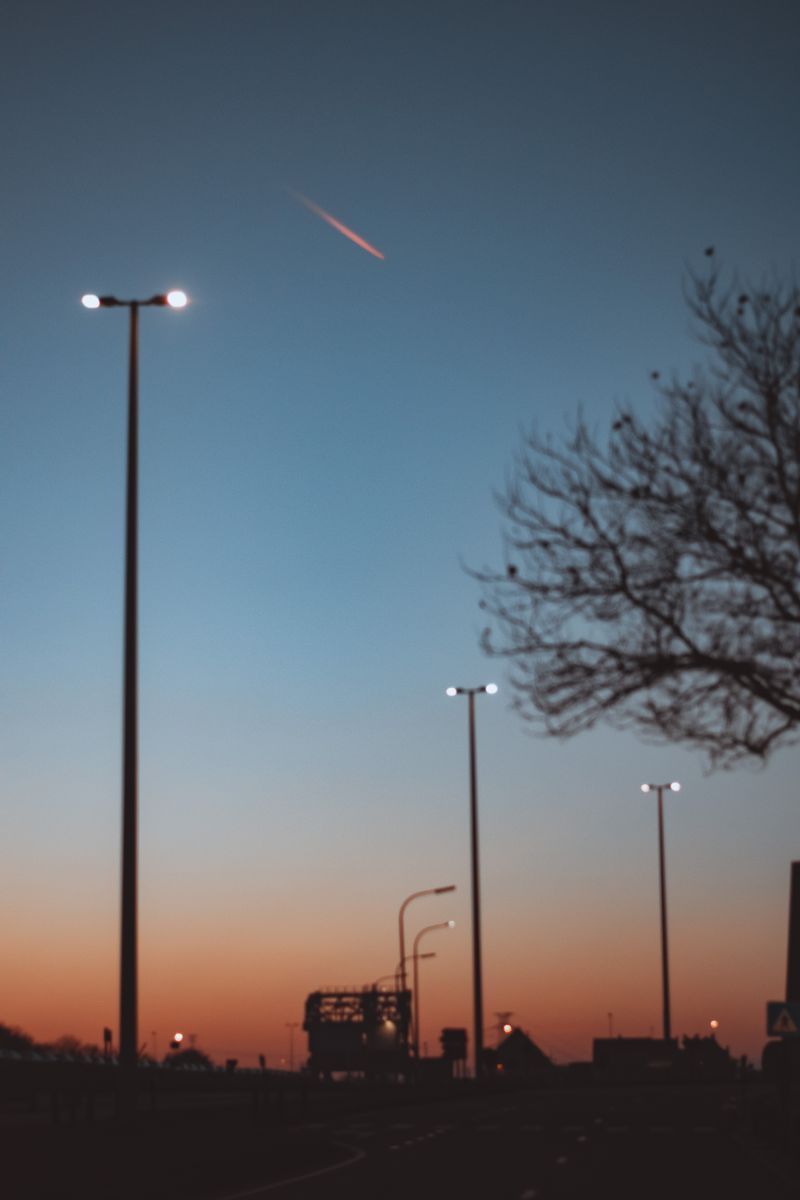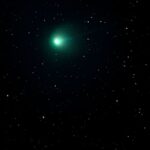How to See a Newly Discovered Green Comet Before It Vanishes for 400 Years
A Rare Astronomical Event
A newly discovered green comet, named Comet Nishimura after its discoverer, Japanese astronomer Hideo Nishimura, is currently making a close approach to Earth. This event is particularly extraordinary because it marks the first time the comet has been visible from Earth in over 400 years. The last time humans had the opportunity to witness its celestial beauty was in the late 1500s, long before the invention of telescopes by Galileo Galilei.
Understanding Comets
To appreciate the significance of this sighting, it is essential to understand the nature of comets. Comets are remnants of debris left over from the formation of our solar system. These celestial bodies are essentially chunks of dirty ice that have survived for billions of years. Typically, comets remain far away from the Sun, frozen and invisible to the naked eye. However, occasionally, some comets enter the inner solar system, bringing them closer to the Sun and making them visible from Earth.
As a comet approaches the Sun, the heat causes the icy material that makes up the comet to evaporate, releasing dust and debris. This process leaves behind a glowing tail, which is the characteristic feature visible from Earth. Comet Nishimura’s current proximity to Earth offers a rare opportunity to observe this phenomenon.
Amateur Astronomer’s Achievement
The discovery of Comet Nishimura by amateur astronomer Hideo Nishimura truly demonstrates the power of human perseverance and dedication in the age of automated telescopes. Nishimura’s discovery, which predates any automated system’s detection, is an impressive testament to the skill and determination of amateur astronomers worldwide.
Andrew Fraknoi, a renowned astronomer, praised Nishimura’s achievement, stating, “It’s getting harder and harder for amateur astronomers to scan the sky and see something that isn’t on the star chart. But that’s what Nishimura has done.”
Viewing the Comet
Observing Comet Nishimura requires some effort and planning. Currently, the comet is visible only from the northern hemisphere. For the best chance of seeing it, one must wake up before sunrise and look towards the eastern horizon. It is advisable to find a location with an unobstructed view of the horizon.
The optimal time to view the comet is on Tuesday morning, as it will be closest to Earth. While the comet will be closest to the Sun on September 17, it will eventually become visible from the southern hemisphere. To locate the comet, one should focus their gaze towards the constellation Leo. However, a pair of binoculars or a small telescope is necessary to fully appreciate the comet’s beauty.
For those dedicated to catching a glimpse of the green comet, Andrew Fraknoi recommends consulting sources such as Sky & Telescope for star charts that can aid in locating the comet accurately. It is essential to note that the naked eye will likely only perceive a fuzzy white glow, as the distinctive lime green color is primarily visible in photographs.
A Philosopher’s Perspective on Celestial Wonders
The appearance of a green comet, unseen for centuries, evokes wonder and reflection. Throughout human history, celestial events have captivated our imagination, leading us to contemplate our place in the vast cosmos. Comets, with their mysterious origins and ephemeral nature, remind us of the impermanence and transience of life itself. They offer a humbling perspective on our existence and invite philosophical introspection.
In a world often consumed by the mundane and the trivial, the sighting of Comet Nishimura serves as a poignant reminder of the beauty and grandeur that exists beyond our earthly concerns. Taking a moment to witness and appreciate such celestial wonders can reignite our sense of curiosity and remind us of the profound connectedness we share with the universe.
Editorial: The Importance of Stargazing and Scientific Exploration
The discovery and observation of comets, like Nishimura, underscore the vital role that amateur astronomers play in expanding our knowledge of the cosmos. While advancements in technology have brought us automated systems capable of scanning the skies, the human element remains instrumental, as demonstrated by Nishimura’s achievement.
The pursuit of scientific knowledge and exploration continues to be a catalyst for human progress. It is through the dedicated efforts of amateurs and professionals alike that we uncover the mysteries of the universe. Encouraging and supporting endeavors in astronomy allows us to deepen our understanding of the cosmos and unveil new insights into the workings of our own planet.
Final Thoughts and Recommendations
The opportunity to witness the Nishimura comet is a fleeting one, lasting only a brief period before it disappears for another 400 years. As such, it is essential for astronomy enthusiasts to seize this opportunity and engage in stargazing.
Finding a suitable location with a clear view of the horizon and equipping oneself with binoculars or a telescope will enhance the viewing experience. Moreover, embracing the wonder and awe evoked by celestial events can provide moments of introspection and inspiration.
Let us be reminded of the words of famed philosopher Carl Sagan, who said, “Somewhere, something incredible is waiting to be known.” The sighting of Comet Nishimura reminds us that the unknown and the extraordinary are often closer than we think, transcending the boundaries of our daily lives and beckoning us to explore the wonders of the universe.

<< photo by Iryna Kuchakova >>
The image is for illustrative purposes only and does not depict the actual situation.
You might want to read !
- Exploring the Mystical Landscapes of Virgin River: Unveiling the Enchanting Filming Locations
- Supermoon Spectacle: A Close Encounter of Lunar Proportions
- Canada’s Expert Predictions: New Zealand-Philippines and Switzerland-Norway Faceoff
- Canadian Football Fever: Analyzing the NFL Week 2 Power Rankings 2023
- NFL Week 2 Power Rankings 2023: Analyzing the Strengths and Weaknesses of all 32 Teams – ESPN
- Exploring the Down-to-Earth Style of Ethan Hawke: A Greyhound Stop at the ‘Wildcat’ Toronto Premiere




